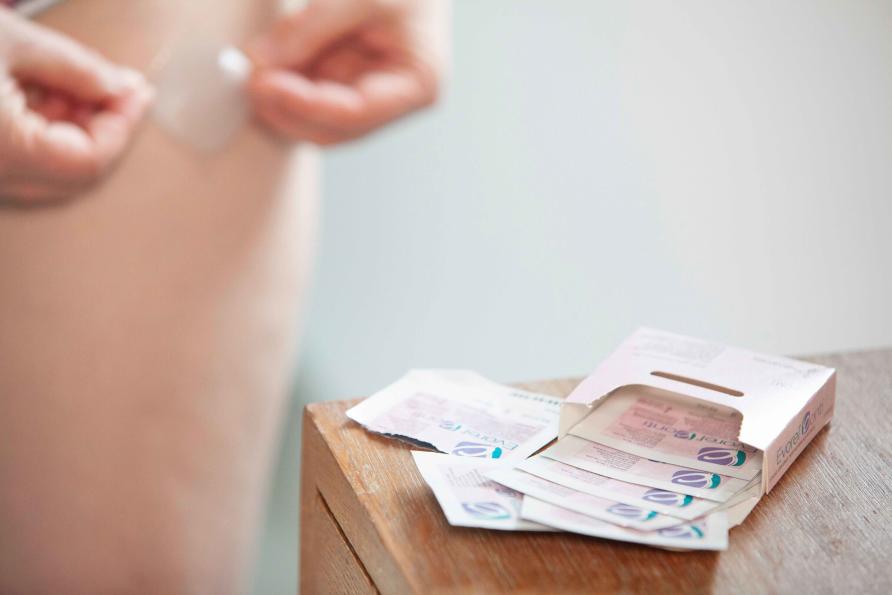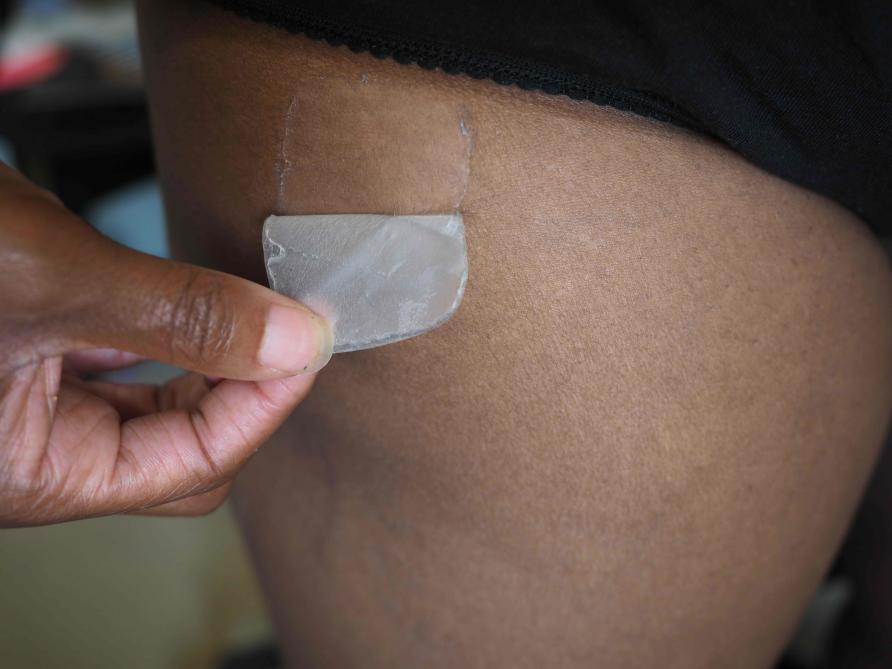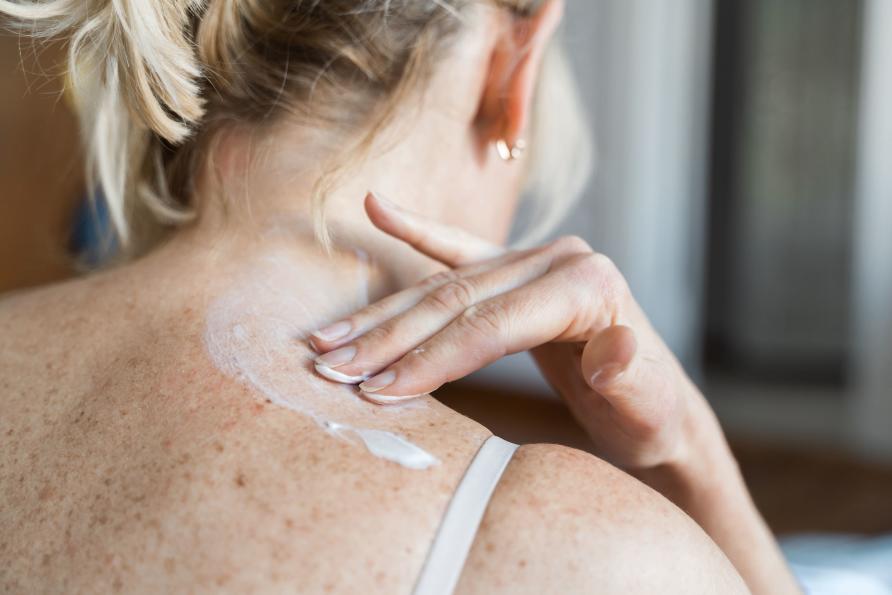This article was written by A/Prof Ada Cheung and originally appeared in Pursuit News.

Oestrogen skin patches deliver the hormone directly into the bloodstream. Picture: Alamy
Since 2020 or so, there have been recurring national shortages of oestrogen transdermal patches in Australia.
These easy-to-use skin patches are applied to the skin like a sticker and deliver oestrogen directly into the bloodstream. They contain the hormone oestradiol, an oestrogen that is naturally produced in the human body and has a major role in maturing and maintaining the female reproductive system.
Oestradiol is also important for bone health, heart health and maintaining mental health and wellbeing.
The patches are used by some perimenopausal, menopausal and post-menopausal women as menopausal hormone therapy (MHT) to help manage some of the more intrusive symptoms of hormonal fluctuations (hot flushes and night sweats, for example). Not all menopausal women can or want to take MHT but around 13 per cent (or 260,000) currently do.
And bear in mind that around two million women in Australia have recently undergone menopause and another 80,000 women join this group each year.
And it’s not just older women who need these patches.
Younger women experiencing early menopause resulting from chemotherapy or diseases affecting the ovaries or pituitary gland require oestrogen.
Transgender women and non-binary people also use oestrogen patches as feminising hormone therapy for gender affirmation.
Australia isn’t the only country to run out.
Global shortages are also affecting countries like the UK and the US with reports of people travelling overseas to get hold of the patches or turning to the internet to order dubious replacements online.
While there are legitimate alternatives to the patches – like tablets and gels – they are more expensive.
Here in Australia, the Therapeutic Goods Administration (TGA) has approved several alternative transdermal patches as a short-term fix, but are the supply issues likely to continue?

There are legitimate alternatives to the patches – like tablets and gels – but they are more expensive. Picture: Alamy
What’s causing these patch shortages?
There are really only four oestrogen patches on the Australian market.
One of those, Climara, ceased production in mid-to-late 2023, putting extra demand on the remaining oestrogen-only brands, Estradot and Estraderm, as well as the combination oestrogen and progesterone patch, Estalis.
Currently both Estradot and Estalis are in short supply – so the loss of just one brand has had massive implications for other stock.
Then there are ‘manufacturing issues’ – although we don’t know a whole lot about the reasons behind these. But reports suggest that supply chain problems are affecting production.
Additionally, the ingredients – derived from soya beans or sweet potatoes – required to manufacture oestradiol patches are in short supply and high demand.
Neither the TGA nor the distributors seem able to provide a clear explanation for the shortages, but according to the TGA website, some products aren’t expected to be back in stock until May 2024.
Has demand outpaced supply?
If we look at oestrogen patches as a treatment of menopause, demand has risen. A UK study found that prescriptions for MHT in England had doubled over five years to more than 500,000 a month.

Transgender women and non-binary people also use oestrogen as feminising hormone therapy. Picture: Getty Images
At the beginning of this century, there were concerns about safety of menopausal hormone therapy after the large Women’s Health Initiative study was stopped early in 2002.
But over the last five years, many of these concerns have been debunked and there is greater awareness about the safety of MHT among doctors and patients. This has also contributed to an increase in demand.
These factors, along with increasing awareness of the options available to women, more accurate information about the safety of MHT and more education within health care about their potential benefits, has also driven interest.
While these patches are used for menopause, trans people also rely on them for feminising hormone therapy.
Starting feminising hormones is an individual decision for people recorded male at birth who identify as female or non-binary. Oestradiol induces feminine physical characteristics like breast growth and fat distribution which helps with gender dysphoria – the severe distress that occurs due to a mismatch between one’s body and internal sense of gender.
Feminising hormone therapy improves psychological functioning and is often crucial for trans people.
While the exact number of trans people is unknown, approximately 0.5 per cent to three per cent of the population are trans – and roughly half of these will want feminising hormone therapy.

Trans and non-binary people also rely on oestrogen for feminising hormone therapy. Picture: Getty Images
So, if we do the maths, working on the basis that Australia has a population of around 27 million, that’s roughly 67,500 – 405,000 people.
And our research shows 14 per cent of those using feminising hormone therapy use an oestradiol patch – which is roughly 9,450 to 56,700 people.
It’s worth noting that there are problems with suddenly stopping the hormone that include bone loss, hot flashes, insomnia, headaches, mood swings, fatigue, aches and pains, and the list goes on.
All of this adds to an increasing demand which just isn’t being matched by supply.
Are there any alternatives to the patches?
There are, but they’re not on the Pharmaceutical Benefits Scheme (PBS) where the Australian Government subsidises the cost of medicine.
Estrogel is another form of oestradiol (in gel form) that is absorbed through the skin and is a great alternative but, because it’s not on the PBS, it costs around double the price of Estradot and Estraderm.
This takes us back to the supply-and-demand issue. Because Estrogel costs more, that price point puts more pressure on demand for Estradot and Estraderm.

There are legitimate alternatives to the patches – like tablets and gels – but they are more expensive. Picture: Getty Images
About ten years ago, these implants (a little pellet inserted under the skin like the Implanon contraceptive), which are a fabulous option, were available. But the implant manufacturer stopped making them altogether and they have never been replaced.
Once inserted, the implants lasted six to nine months, negating the need to use patches regularly or take tablets.
Globally, there is now only one manufacturer making a similar product called Estrapel. It’s not routinely available in Australia, although a handful of doctors here bypass the standard route and import it themselves with some special paperwork.
All of this tell us that Australia desperately needs a more stable supply of oestradiol options, but it looks uncertain whether those people who rely on these medications will get that stability any time soon.
In the meantime, for anyone affected by Australia’s oestrogen patch shortage, go and speak to your doctor to discuss alternative options like tablets or gels.







